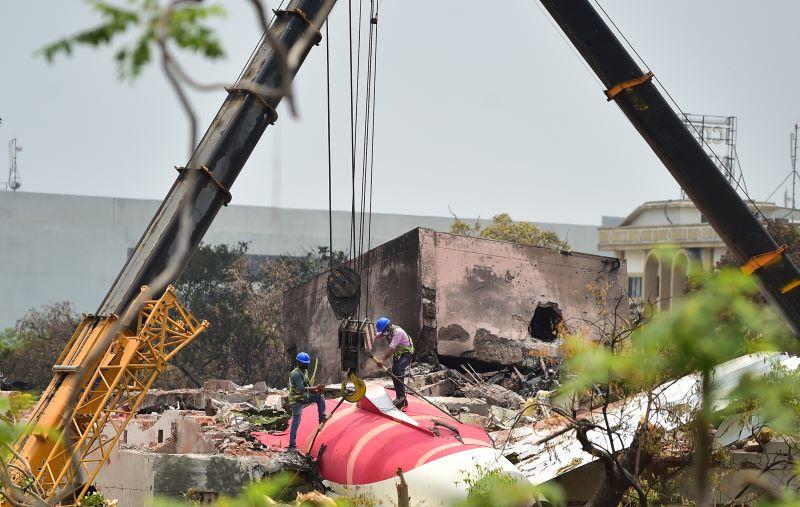Air India 787 Inspections Provide No Clues For AI 171 Accident Investigation

Enhanced inspections of Air India’s Boeing 787 fleet have turned up no findings that might help explain the June 12 fatal accident of Air India Flight 171, which crashed on departure from Ahmedabad’s Sardar Vallabhbhai Patel International Airport.
The checks, ordered by India’s Directorate General of Civil Aviation (DGCA), have cleared 24 of Air India’s 33 787s, the agency said in a June 17 statement. Inspections on the rest of the fleet will be done in the coming days for in-service aircraft and following heavy maintenance visits on four that are undergoing the work.
Parallel surveillance of the airline’s 787 operations did not reveal any new risks.
“The recent surveillance conducted on Air India’s Boeing 787 fleet did not reveal any major safety concerns,” the statement said. “The aircraft and associated maintenance systems were found to be compliant with existing safety standards.”
The regulator did express “concern” over recent maintenance-related delays.
“The airline was advised to strengthen internal coordination across engineering, operations, ground handling units and ensure availability of adequate spares to mitigate passenger delays resulting from such issues and strictly adhere to regulations,” DGCA said.
While generally reassuring for Air India’s ongoing operations, few conclusions about the accident can be drawn from the DGCA’s findings. A rare technical issue that could affect other 787s cannot be ruled out, even though the inspections turned up no apparent clues pointing to such a problem. Investigators may find a latent issue that revealed itself on Flight 171 due to a combination of specific circumstances, or one problematic part on the accident aircraft.
Unique problems with the aircraft that operated as Flight 171, delivered to Air India in 2014 and registered as VT-ANB, remain a possibility. The inspections did not turn up any high-level systemic risks in Air India’s operations, nor do they rule out acute technical causes, such as fuel contamination or a maintenance error.
Investigators have released few details from the still-early-stages probe. Officials confirmed a mayday call from the flight deck that suggested a thrust problem. It is not clear the issue was a lack of power from the GE Aerospace GEnx-1B engines, or some other issue—such as engine settings or the aircraft’s takeoff configuration—that left it with insufficient thrust to maintain altitude.
Video surveillance of the flight taken from the airport shows the London Gatwick-bound 787 lifting off at the end of Runway 23 and climbing for 14 sec. before leveling off and steadily descending into a populated area about 1 nm from the airport. Its landing gear remained extended. The entire flight lasted about 30 sec. The accident killed 241 of 242 passengers and crew, and at least 19 more on the ground.
The video does not appear to show any major flight control anomalies, though neither the aircraft’s configuration nor any post-rotation flight control surface movements are verifiable on the video. Investigators have not validated the video or offered any public comments on what it shows.
Sound from another widely shared video is similar to the noise generated by a ram air turbine (RAT), a small, two-bladed propeller-driven emergency generator. The device, which extends out from the bottom of the fuselage aft of the main landing gear, is not clearly visible on the video. Investigators have not discussed whether the RAT deployed.
On the 787, several failure conditions trigger automatic RAT deployment. Among them: dual engine failures, hydraulic system pressure failure, electric pump failures, and flight deck instrument failure. But the RAT can be deployed manually as well, meaning its use alone does not constitute proof of a technical glitch.
Investigators have recovered both the digital flight data and cockpit voice recorders. While initial read-outs rarely explain an accident sequence, they can offer clues that help pinpoint issues as potential risks to other aircraft in the fleet or a likely unique set of circumstances.
Should data suggest the chance of a broader 787 or GEnx-1B engine problem, as opposed to circumstances that affected only VT-ANB on its accident flight, regulators would likely not hesitate to take action, even as they worked to fully understand the issue.





